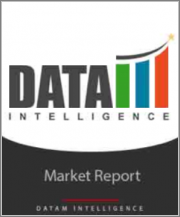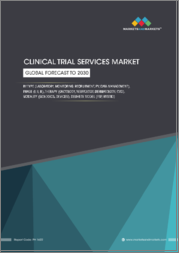
|
시장보고서
상품코드
1297790
세계의 피부 치료제 시장(2023-2030년)Global Dermatology Drugs Market - 2023-2030 |
||||||
시장 개요
피부 치료제 세계 시장 규모는 2022년 186억 8,480만 달러, 2030년에는 408억 3,090만 달러에 달할 것으로 예상되며, 추정 및 예측 기간(2023-2030년) 동안 10.5%의 CAGR을 기록할 것으로 예상됩니다.
피부과학은 여드름 극복, 피부 잡티 검사, 피부암 검진, 습진 및 건선 치료 등 다양한 분야에 도움이 됩니다. 수면 아래에서 일어나는 일에 대해서는 피부가 모든 것을 알려줍니다.
시장 역학
치료 효과가 높은 의약품 출시
고객 지향적인 신약의 빈번한 출시는 세계 피부치료제 사업에 큰 영향을 미칠 것으로 예상됩니다. 예를 들어, 일라이 릴리의 건선 치료제가 인도 DCGI로부터 승인을 받아 인도 피부과 시장 진출이 가능해졌습니다. 웹사이트 개설, 캠페인 인지도를 높이기 위한 TV 및 소셜 미디어 광고와 같은 신흥국 시장 개척 방식도 예측 기간 동안 시장 발전을 촉진할 것으로 보입니다.
피부 치료제 가격 상승
피부치료제 관련 비용 상승이 시장 확대의 걸림돌로 작용하고 있습니다. 많은 시장 진입 기업들이 회복 속도를 높이기 위해 신약 개발에 많은 투자를 하고 있으며, 이로 인해 비용이 상승하고 있습니다. 그 결과, 모든 소득 계층에 대한 대체 치료가 현실적이지 않기 때문에 이 문제는 시장 확대에 걸림돌로 작용하고 있습니다.
COVID-19 영향 분석
COVID-19는 피부과 약품에 무서운 영향을 미칩니다. 현재 진행 중인 많은 피부 치료제 임상시험이 COVID-19로 인해 중단되었고, 안전성에 대한 우려, 환자의 진료소 방문 제한, COVID-19 연구를 위한 자원의 우선순위 등의 이유로 많은 임상시험이 중단되거나 연기되어 시장 성장에 영향을 미쳤습니다. 그 결과 의약품의 연구 및 승인 일정이 연기되었습니다.
또한, 전염병으로 인해 피부과 진료소 방문이 감소하고 선택적 수술이 연기되었습니다. 그 결과, 일부 환자들은 피부과 질환의 진단과 치료가 지연된 것으로 추정됩니다. 이러한 지연은 질병 관리 및 전반적인 결과에 영향을 미칠 수 있습니다.
목차
제1장 조사 방법과 조사 범위
제2장 정의와 개요
제3장 주요 요약
제4장 시장 역학
- 영향요인
- 성장 촉진요인
- 치료 효과 높은 의약품 출시
- 성장 억제요인
- 피부 치료제 가격 상승
- 기회
- 고령자 인구 증가
- 영향 분석
- 성장 촉진요인
제5장 산업 분석
- Porter's 5 Force 분석
- 공급망 분석
- 가격 분석
- 규제 분석
제6장 COVID-19 분석
제7장 약제 클래스별
- 아토피 피부염
- 건선
- 여드름
- 탈모
- 포진
- 주사
제8장 약제 클래스별
- 항감염제
- 항여드름제
- 칼시뉴린 억제제
- 레티노이드
- 부신피질 스테로이드
- 기타 약물 클래스
제9장 최종사용자별
- 병원
- 피부과 클리닉
- 미용 센터
- 기타
제10장 지역별
- 북미
- 미국
- 캐나다
- 멕시코
- 유럽
- 독일
- 영국
- 프랑스
- 이탈리아
- 스페인
- 기타 유럽
- 남미
- 브라질
- 아르헨티나
- 기타 남미
- 아시아태평양
- 중국
- 인도
- 일본
- 호주
- 기타 아시아태평양
- 중동 및 아프리카
제11장 경쟁 상황
- 경쟁 시나리오
- 시장 상황/점유율 분석
- M&A 분석
제12장 기업 개요
- Leo Pharma
- Allergan Inc.
- Amgen Inc.
- GI Dermatics
- Sanofi
- Merck & Co.
- Pfizer
- AbbVie
- Bausch Health
- Novartis
제13장 부록
ksm 23.07.11Market Overview
The Global Dermatology Drugs Market size was worth US$ 18,684.8 million in 2022 and is estimated to reach US$ 40,830.9 million by 2030, growing at a CAGR of 10.5% during the forecast period (2023-2030).
Dermatology can help people overcome acne, inspect skin blemishes, get skin cancer screenings, treat eczema and psoriasis, and much more. When it comes to things happening under the surface, your skin can tell you everything.
Market Dynamics
Launch of Therapeutically Effective Drugs
The frequent introduction of new and customer-focused goods is expected to have a greater impact on the global dermatological medicines business. For example, Eli Lilly's psoriasis treatment has received approval from India's DCGI, allowing the business to access the Indian dermatological market. Marketing methods such as website launches, TV and social media commercials promoting campaign awareness, and others will also aid in the market's development over the forecast period.
Rising Prices Of Dermatology Drugs
The increasing costs associated with these medications hinder market expansion. Many market participants make large investments in the development of new pharmaceuticals in order to speed up the recovery process, which raises the cost. As a result, this issue impedes market expansion because treatment alternatives are not practical for all income groups.
COVID-19 Impact Analysis
COVID-19 has a terrifying effect on dermatological medications. Many current clinical trials for dermatological treatments were interrupted by the pandemic, affecting market growth as many trials were discontinued or postponed due to safety concerns, limited patient visits to clinics, and prioritisation of resources for COVID-19 research. As a result, medication research and clearance schedules have been pushed back.
Also Patient visits to dermatological clinics were reduced as a result of the epidemic, and elective operations were postponed. As a result, some people may have had delayed diagnosis and treatment for dermatological problems. This delay may have an influence on illness management and overall results.
For more details on this report - Request For Sample
Segment Analysis
The global dermatology drugs market is segmented based on Application , Drug class and End user
The Acne Application Segment will be Dominated By Market Players During the Forecast Period.
Acne is expected to grow at a significant CAGR during the forecast period, owing to an increase in the number of market participants offering improved products internationally. Acne prevalence is also increasing, particularly among young people, which is a key factor contributing to the expansion of this category. Furthermore, the availability of a wide selection of acne products at retail pharmacies, as well as the convenience of access, are fueling the development of this market.
Geographical Analysis
North America is The Dominating Region During The Forecast Period.
Northa america has been dominating region for dermatology drugs market because of the rising incidence of dermatological infections. North America accounted for the majority of the market share of 38.7%. Another key aspect contributing to the region's growth is the presence of big businesses along with new launches. North America also possesses the most recent technology advances in R&D. This, together with increased dermatological product sales, is likely to fuel growth throughout the projection period. Furthermore, Asia Pacific is expected to have the highest CAGR due to increased public knowledge about the care and management of acne and other disorders.
Competitive Landscape
The major global players include: Leo Pharma, Allergan, Amgen Inc. GI Dermatics Sanofi Merck & Co. Pfizer, AbbVie, Bausch Health, and Novartis.
Why Purchase the Report?
- To visualize the global dermatology drugs market segmentation based on the Application, drug class, end user and region, as well as understand key commercial assets and players.
- Identify commercial opportunities by analyzing trends and co-development.
- Excel data sheet with numerous data points of global dermatology drugs market level with all segments.
- PDF report consists of a comprehensive analysis after exhaustive qualitative interviews and an in-depth study.
- Product mapping available as Excel consisting of key products of all the major players.
The global dermatology drugs market report would provide approximately 92 tables, 108 figures and 195 pages.
Target Audience 2023
- Manufacturers/ Buyers
- Industry Investors/Investment Bankers
- Research Professionals
- Emerging Companies
Table of Contents
1. Methodology and Scope
- 1.1. Research Methodology
- 1.2. Research Objective and Scope of the Report
2. Definition and Overview
3. Executive Summary
- 3.1. Snippet by Application
- 3.2. Snippet by Drug class
- 3.3. Snippet by End user
4. Dynamics
- 4.1. Impacting Factors
- 4.1.1. Drivers
- 4.1.1.1. Launch of therapeutically effective drugs
- 4.1.2. Restraints
- 4.1.2.1. Rising prices of dermatology drugs
- 4.1.3. Opportunity
- 4.1.3.1. Rise in elderly population
- 4.1.4. Impact Analysis
- 4.1.1. Drivers
5. Industry Analysis
- 5.1. Porter's 5 forces Analysis
- 5.2. Supply Chain Analysis
- 5.3. Pricing Analysis
- 5.4. Regulatory Analysis
6. COVID-19 Analysis
- 6.1. Analysis of COVID-19
- 6.1.1. Scenario Before COVID-19
- 6.1.2. Scenario During COVID-19
- 6.1.3. Scenario Post COVID-19
- 6.2. Pricing Dynamics Amid COVID-19
- 6.3. Demand-Supply Spectrum
- 6.4. Government Initiatives Related to the Market During the Pandemic
- 6.5. Manufacturers' Strategic Initiatives
- 6.6. Conclusion
7. By Drug Class
- 7.1 Atopic Dermatitis
- 7.2 Psoriasis
- 7.3 Acne
- 7.4 Alopecia
- 7.5 Herpes
- 7.6 Rosacea
8. By Drug Class
- 8.1. Anti-Infectives
- 8.2. Anti-Acne
- 8.3. Calcineurin Inhibitors
- 8.4. Retinoids
- 8.5. Corticosteroids
- 8.6. Other Drug classes
9. By End user
- 9.1. Hospitals
- 9.2. Dermatology Clinics
- 9.3. Cosmetic Centers
- 9.4 Others
10. By Region
- 10.1. Introduction
- 10.1.1. Market Size Analysis and Y-o-Y Growth Analysis (%), By Region
- 10.1.2. Market Attractiveness Index, By Region
- 10.2. North America
- 10.2.1. Introduction
- 10.2.2. Key Region-Specific Dynamics
- 10.2.3. Market Size Analysis and Y-o-Y Growth Analysis (%), By Application
- 10.2.4. Market Size Analysis and Y-o-Y Growth Analysis (%), By Drug class
- 10.2.5. Market Size Analysis and Y-o-Y Growth Analysis (%), By End user
- 10.2.6. Market Size Analysis and Y-o-Y Growth Analysis (%), By Country
- 10.2.6.1. The U.S.
- 10.2.6.2. Canada
- 10.2.6.3. Mexico
- 10.3. Europe
- 10.3.1. Introduction
- 10.3.2. Key Region-Specific Dynamics
- 10.3.3. Market Size Analysis and Y-o-Y Growth Analysis (%), By Application
- 10.3.4. Market Size Analysis and Y-o-Y Growth Analysis (%), By Drug class
- 10.3.5. Market Size Analysis and Y-o-Y Growth Analysis (%), By End user
- 10.3.6. Market Size Analysis and Y-o-Y Growth Analysis (%), By Country
- 10.3.6.1. Germany
- 10.3.6.2. The UK
- 10.3.6.3. France
- 10.3.6.4. Italy
- 10.3.6.5. Spain
- 10.3.6.6. Rest of Europe
- 10.4. South America
- 10.4.1. Introduction
- 10.4.2. Key Region-Specific Dynamics
- 10.4.3. Market Size Analysis and Y-o-Y Growth Analysis (%), By Application
- 10.4.4. Market Size Analysis and Y-o-Y Growth Analysis (%), By Drug class
- 10.4.5. Market Size Analysis and Y-o-Y Growth Analysis (%), By End user
- 10.4.6. Market Size Analysis and Y-o-Y Growth Analysis (%), By Country
- 10.4.6.1. Brazil
- 10.4.6.2. Argentina
- 10.4.6.3. Rest of South America
- 10.5. Asia-Pacific
- 10.5.1. Introduction
- 10.5.2. Key Region-Specific Dynamics
- 10.5.3. Market Size Analysis and Y-o-Y Growth Analysis (%), By Application
- 10.5.4. Market Size Analysis and Y-o-Y Growth Analysis (%), By Drug class
- 10.5.5. Market Size Analysis and Y-o-Y Growth Analysis (%), By End user
- 10.5.6. Market Size Analysis and Y-o-Y Growth Analysis (%), By Country
- 10.5.6.1. China
- 10.5.6.2. India
- 10.5.6.3. Japan
- 10.5.6.4. Australia
- 10.5.6.5. Rest of Asia-Pacific
- 10.6. Middle East and Africa
- 10.6.1. Introduction
- 10.6.2. Key Region-Specific Dynamics
- 10.6.3. Market Size Analysis and Y-o-Y Growth Analysis (%), By Application
- 10.6.4. Market Size Analysis and Y-o-Y Growth Analysis (%), By Drug class
- 10.6.5. Market Size Analysis and Y-o-Y Growth Analysis (%), By End user
- 10.6.6. Market Size Analysis and Y-o-Y Growth Analysis (%), By Country
11. Competitive Landscape
- 11.1. Competitive Scenario
- 11.2. Market Positioning/Share Analysis
- 11.3. Mergers and Acquisitions Analysis
12. Company Profiles
- 12.1. Leo Pharma
- 12.2. Allergan Inc.
- 12.3. Amgen Inc.
- 12.4. GI Dermatics
- 12.5. Sanofi
- 12.6. Merck & Co.
- 12.7. Pfizer
- 12.8. AbbVie
- 12.9. Bausch Health
- 12.10. Novartis
LIST NOT EXHAUSTIVE
13. Appendix
- 13.1. About Us and Services
- 13.2. Contact Us

















